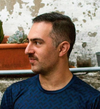We only need a few things to build something beautiful:
- A guiding vision or a feeling for what can be,
- A keen eye for the existing structure we're working with,
- A coherent look at the patterns of activity and forces acting on that structure,
- An adaptive, step-wise process that alters the structure, re-attunes to the new patterns of activity and force, and applies itself once again.
Then: good form will emerge, as if by nature. Through you[r team], the next appropriate move will suggest itself, time and time again.
The process
The above is a heavily compressed paraphrase of ideas in Christopher Alexander's The Process of Creating Life, published in 2002. (The seeds of these ideas were already bearing fruit in his The Timeless Way of Building, published in 1979.)
Alexander was interested in how we build the world around us to be more structurally whole and healthy, and especially focused on the processes by which we do so. One of his primary arguments is that the only way to build things well is to follow a certain class of step-by-step "unfolding:" gradually growing, improving, embellishing, repairing, and rebuilding structure over time.
A sunflower can't be built in the lab, atom by atom. It's grown from a seed of existing structure and unfolded. If we want to make good systems, we have to work in the same kind of way.
Alexander's fundamental process of creation covers a broad spectrum of activities. The archetype is invariant, but the specific instantiations and sequences are necessarily context-specific.
A natural outcome
I've had the fortune to work on a few projects in the last decade that felt good because we worked naturally, stayed close to the context of use, and made things that activated and improved important human patterns of activity.
In the moment, the work felt fraught, charged, important, and uncertain; but never stuck, stalled, scattered, or confused. In hindsight, it felt as if the result we reached was inevitable.
In our kind of work — groups of people building software systems — there are additional needs and complicating factors. An interpersonal layer of coordination, communication, and shared understanding doesn't exist in individual craft, for one. It's why John Cutler adapts a form of Alexander's elements above into eight discrete basics in his TBM 12/52: The Basics.
When we get our house in order, though, when the structures and activities and forces start to appear, the way we build can feel so inevitable as if to be a basic fact of nature.
Just the same as it feels in an individual act like writing.
Amid all the sameness, however, one change became evident. A good change. Tengo was aware that, as he went on writing his novel, a new wellspring was forming inside him. Not that its water was gushing forth: it was more like a tiny spring among the rocks. The flow may have been limited, but it was continuous, welling up drop by drop. He was in no hurry. He felt no pressure. All he had to do was wait patiently for the water to collect in the rocky basin until he could scoop it up. Then he would sit at his desk, turning what he had scooped into words, and the story would advance quite naturally. —Haruki Murakami, 1Q84
This ideal model—to say it in her words—is the author who produces books "as a pumpkin vine produces pumpkins." She also used other metaphors of natural processes that follow their course unperturbed—the wind that shapes the mountain, the wrack of the tides, the annual circles in the bole of the trees—but these were metaphors of literary creation in general, whereas the image of the pumpkin referred directly to me. —Italo Calvino, If On a Winter's Night a Traveller
... For my part, I've worked harder this summer than in my entire life and I can say that I've worked for my entire life. I've laid the foundations of a magnificent work... I have died and been born again with the gem-encrusted key to my final spiritual casket. It's up to me now to open it in the absence of all extraneous impressions and its mysteries will emerge into a very beautiful sky. I'll need twenty years during which I'll remain cloistered within myself, renouncing all publicity other than reading to friends. I'm working on everything at once, or rather I mean that everything is so well ordered in my mind that, as a sensation reaches me now, it is transformed and automatically places itself in the right book or the right poem. When a poem is ripe, it will drop free. You can see that I'm imitating the laws of nature. —Stéphane Mallarmé, Selected Letters, 66
I, for one, am not holding the gem-encrusted to my final spiritual casket. But I would like to work in a way that imitates the laws of nature.

One thing of note:
- Check out the Christopher Alexander and the Center for Environmental Structure Archive: this project is digitizing and archiving 50+ years of Alexander's work and thought.
This is Loops and Cycles, a weekly mailing list exploring how we work together and make good things. Our format this week is a bit different, and our focus a bit more philosophical. As ever, let me know what you think.


